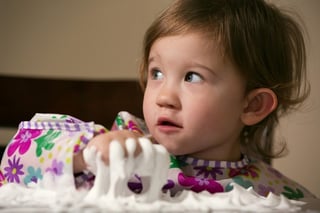What is Sensory Play and How Does it Help Your Preschooler?
The power of myth is so strong, most adults will mistakenly tell you humans have but five senses — sight, hearing, taste, touch and smell. This is popular but wrong by at least half. Children use other senses: temperature (thermoception), body position (proprioception), balance and more. Sensory play as practiced in the best preschools feeds this thirst for information about a child’s environment.
 Brain Food
Brain Food
You can see sensory play in the best preschools because children have access to sand tables, water, glue and paint. Sensory play can be messy, but inputs are vital for children’s brains. Think of sensory play as brain food, say the experts at Highscope.
Highscope points out that sensing gravity guides children to explore rolling, falling, sliding and dropping. From your preschooler’s perspective, despite using muscle power to lift up the water bucket, your child sees, hears and feels the water pulled down by some unseen force.
Imitate the best preschools at home and feed your child’s brain by providing cardboard tubes, blocks, marbles, dry beans or birdseed, scoops and buckets. You may not wish to indulge in a water table indoors, but outside sensory play can be even more exciting.
Wide World
Sensory play in the best preschools and households helps children interpret an often confusing world. As the experts at PBS put it, “Imagine teaching an adult to use a computer without actually sitting in front of a computer.”
Children need to figure out the large and small issues of their physical world. Sensory play is the process of getting those issues into children’s brains, where all the sorting and calculating goes on. PBS tells us, too, that as the children’s various systems (thermoception, perception of brightness and color, pressure, itch, pain, tension) absorb information, their brains grow in other areas:
- Cognitively
- Linguistically
- Socially and emotionally
- Physical dexterity
Creativity
You just need to look to the art world to see that adults thrive on sensory stimulation too. Most people enjoy an Alexander Calder mobile for its whimsical and unpredictable movement. Calder captured childhood's sensory learning and served it back to adults as art. Children experience sensory play and store up images, ideas and sounds. They return these as creative, beautiful artwork in clay, paint or collage.
The best preschools, including Kids Konnect, use plenty of sensory play. How have you seen your child think, grow and learn with sensory play? Please comment below.
